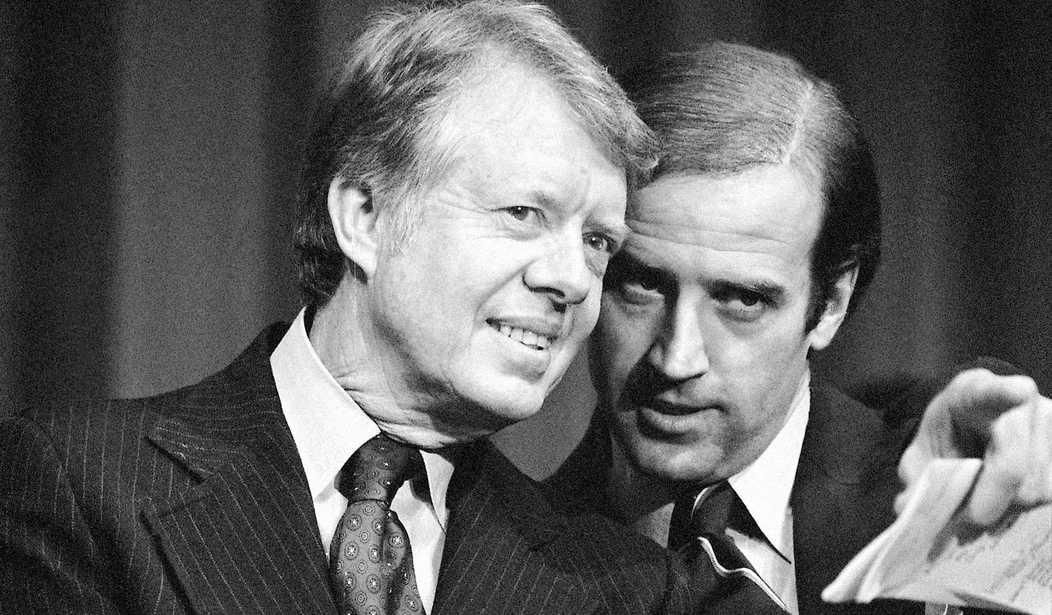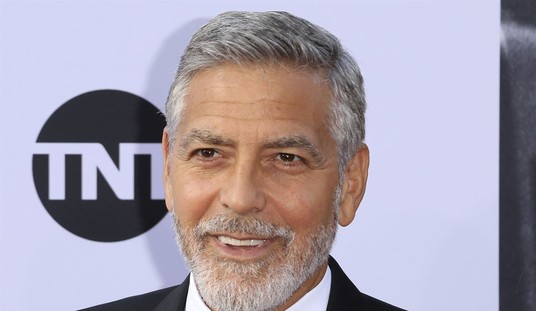Earlier today, the Federal Reserve finally took action on inflation by, er … taking nearly the minimum level of action possible. As widely expected, chair Jerome Powell and the board announced a 0.25% increase in the target interest rate. They did, however, signal that more increases than predicted could be on tap and provide a significant reassessment for inflation in the longer term:
The Federal Reserve lifted its key interest rate by a quarter of a percentage point on Wednesday as policymakers took their first decisive step toward trying to tame rapid inflation by cooling the economy.
The Fed had kept rates near zero since March 2020, and the decision marked its first increase since 2018. Policymakers also projected six more similarly sized increases over the course of 2022 as inflation comes in at a 40-year high. …
Central bankers plotted a more aggressive plan for controlling inflation than in December, when they last released economic projections. Officials now expect to raise rates to 2.8 percent by the end of 2023, based on the median estimate, up from 1.6 percent in their prior projections. That is high enough that, by the Fed’s own estimates, it would amount to actually tapping the brakes on the economy — not just taking a foot off the gas pedal.
The move did create a rare moment of open dissent at the Fed. One member wanted a sharper increase up front:
James Bullard, the president of the Federal Reserve Bank of St. Louis, voted against the committee’s decision because he favored a larger interest rate increase of half a percentage point.
Bookmark that point for the moment. The Fed also announced that — again, as expected — they would begin to slowly divest some of the monetary expansion instruments they have generated over the last couple of years as a further brake on inflation:
The Fed also said it would start scaling back its enormous $9 trillion balance sheet at a coming meeting, but did not offer specifics.
Good luck selling off all that backlog. Of course, the Fed doesn’t intend to try to roll back all of its 13-year pursuit of quantitative easing, because it simply cannot do so. They’re hoping to unwind at least the last couple years of its monetary expansion to soothe the 40-year record inflation that the Fed’s bubble has fueled. Will that be enough? Powell isn’t really sure:
For much of the past year, Fed officials said inflation would be a temporary feature of the recovery, and limited to parts of the economy hit hardest by the pandemic. But over time, as higher costs spread to rent, groceries and everything in between, that message bore little resemblance to what was actually unfolding in the economy and in people’s daily lives.
“We’ve had this expectation, as you all know, for more than a year, and it hasn’t actually come true, so we’re humble about the fact that we can’t call with any confidence the turn,” Powell said to lawmakers two weeks ago.
Count Larry Summers among the unimpressed. Joe Biden’s not the only one leading from behind these days, it seems:
Anything is possible, and wishful thinking can sometimes prove self-fulfilling. But I believe the Fed has not internalized the magnitude of its errors over the past year, is operating with an inappropriate and dangerous framework, and needs to take far stronger action to support price stability than appears likely. The Fed’s current policy trajectory is likely to lead to stagflation, with average unemployment and inflation both averaging over 5 percent over the next few years — and ultimately to a major recession.
Indeed, recent research that I conducted with my Harvard colleague Alex Domash shows that overheating conditions of high inflation and low unemployment are usually followed, in short order, by recession.
A year ago, the Fed thought inflation would be in the 2 percent range for the next year. Six months ago, it was expressing optimism that inflation was transitory. Two weeks ago, it was still buying mortgage-backed securities even as house prices had increased by more than 20 percent. No explanation has been offered for these rather momentous errors. Nor is there any suggestion that the Fed forecasting procedures or the personnel that produced them will change. Indeed, the most important change in the March Monetary Policy Report to Congress was in the wrong direction — the removal of the discussion of the various monetary policy rules that had suggested policy was dangerously loose.
So there is little basis for confidence in the Fed’s assessment of inflation risks. With extraordinarily tight labor markets getting tighter by the best available measures, and wage inflation running at 6 percent and accelerating, high inflation was a major risk even before the events of recent weeks. We now face major new inflation pressures from higher energy prices, sharp run-ups in grain prices due to the Ukraine war, and potentially many more supply-chain interruptions as covid-19 forces lockdowns in China. It would not be surprising if these factors added three percentage points to inflation in 2022. And with price increases outstripping wage increases, a wage-price spiral is a major risk.
Expect to hear plenty of scoffing at Summers’ prediction from the White House, a particular habit of the Biden administration in reaction to substantive criticism. That’s how the White House treated Summers thirteen months ago when he warned — again in a Washington Post column — that Joe Biden’s $1.9 trillion “American Rescue Plan” would touch off a major wave of inflation. Remember this from Biden’s first fortnight in office?
First, while there are enormous uncertainties, there is a chance that macroeconomic stimulus on a scale closer to World War II levels than normal recession levels will set off inflationary pressures of a kind we have not seen in a generation, with consequences for the value of the dollar and financial stability. This will be manageable if monetary and fiscal policy can be rapidly adjusted to address the problem. But given the commitments the Fed has made, administration officials’ dismissal of even the possibility of inflation, and the difficulties in mobilizing congressional support for tax increases or spending cuts, there is the risk of inflation expectations rising sharply. Stimulus measures of the magnitude contemplated are steps into the unknown.
Read through the entire column and then decide who to trust on economic policy. Not that Summers is necessarily oriented toward conservative policies or strongly advocating free-market solutions; his work in the Clinton and Obama administrations, especially the latter, puts him pretty squarely in the center-left category. He is, however, an honest broker on macroeconomics and enough of a realist to demonstrate just how far left Biden and Democrats have gone on economic policy, and just how much damage they’ve done.
Needless to say, I’d bet on Summers being correct and perhaps even a bit optimistic. The Fed will still have to expand the monetary supply to deal with massive budget deficits, which means we’re structurally locked into inflation at the moment until a recession knocks the wind out of it, and us for that matter. It now seems entirely likely that these levels of inflation will only marginally improve between now and the end of the year, which means Democrats had better develop a more convincing “Putin did it” argument or start planning for a long stay in the political wilderness.








Join the conversation as a VIP Member